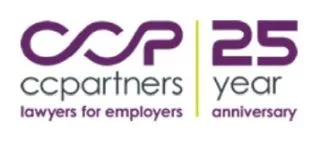- with Senior Company Executives, HR and Finance and Tax Executives
- in Canada
- with readers working within the Automotive, Banking & Credit and Business & Consumer Services industries
Workplace bullying and harassment complaints have to be investigated in a manner that is reasonable in the circumstances. This is a long-established workplace legal principle. But what happens to a long-established legal principle when the workplace itself is not long established?
In this article we will look at some developments in how bullying and harassment complaints arise and ought to be investigated in a new era of work:
1. Developments in Harassment Itself
Monitoring for harassment online is not exactly a new development, but working from home during a pandemic when tensions may be higher than normal has certainly given employers a reason to be more diligent about workplace harassment that does not occur in person. Further, new communication tools like Teams and Zoom have given workers a way to stay in communication, but also a new setting in which harassment can occur. In this day and age, workers are also more sensitive to and aware of incidents, like the use of microaggressions, that could legitimately ground harassment complaints.
2. What Do Employers Need to Know about Microaggressions?
We are of course getting more and more requests from clients for advice on how to deal with complaints of microaggressions. Generally speaking, a microaggression can be considered a commonplace or somewhat casual verbal, behavioural, or environmental slight or indignity, whether intentional or unintentional, that communicates hostile, derogatory, or negative attitudes toward stigmatized or culturally marginalized groups. Microaggressions convey stereotypes, negative traits, or general insensitivity or disrespect. Examples may include: interrupting or talking over a person speaking, questioning the expertise or competency of a woman/racial/gender minority on a topic in which they are knowledgeable, not respecting a person's preferred pronouns.
Always keep in mind that in Ontario, workplace harassment has a statutory definition. It is “a course of vexatious comment or conduct against a worker in a workplace that is known or ought reasonably to be known to be unwelcome.” Workplace harassment does not need to be intentional, but a single incident will only constitute workplace harassment if it is significantly serious. A single microaggression likely will not constitute workplace harassment. But when microaggressions go unchecked, they can accumulate and have a “macro” effect on the recipient. This could certainly result in a finding of workplace harassment.
3. Management's Response to Harassment and Bullying is the Same…Just Different
Just as in person, diligently taking active steps to address online harassment is important. This may be more difficult when work is done remotely. Employers will be held to a reasonable standard, but organizations should know what to look for and how to act if harassment is either noticed or reported.
In most cases, an employee will report a complaint to management. Management should properly gather information and investigate the complaint as appropriate in the circumstances. The potential “bully” ought to be made aware of the substance of the complaint and given an opportunity to respond. The conduct complained of may have a reasonable explanation – such as if technical issues made it that the worker did not know who they were addressing and so they used the wrong titles or pronouns. Or they may have been unintentionally microaggressive toward a colleague, and with some notice, are able to satisfactorily correct their conduct.
Whether in person or online, the same basic principles of diligence and procedural fairness apply.
4. How is an Employer Supposed to Investigate in a Hybrid or Remote Workplace?
The law requires that a workplace investigation be conducted in a manner reasonable in the circumstances. Sometimes a phone conversation with both parties to a complaint will be sufficient to satisfy this onus. In other situations, a full and formal investigation through an independent third party is required. Hybrid and remote workplaces require a flexible and considered approach to workplace investigations.
Personally, I prefer conducting workplace investigations through in-person interviews. In-person communication tends to be clearest. Sometimes an interviewee's body language that is most noticeable in-person helps guide the discussion. But in-person meetings are not always possible. An investigation can be conducted through phone calls or videoconference meetings, or a combination of methods where appropriate. An investigator will likely be gathering documents to assist their analysis. Witnesses can provide photos, text messages, emails, even videos and audio recordings, electronically. Their narrative may simply assist in the review of tangible evidence.
But for any interviews being conducted remotely, an investigator needs to take extra care to ensure that they are properly recording the substance of the interviewee's information. We have to take our time, ask clarifying questions, and have the interviewee repeat themselves. I have also, on occasion, recorded the video or audio of an interview, with the interviewee's knowledge, for the purpose of reviewing their information while I draft the report. If I am going to make a recording, I make sure that I am clear about the purpose of the recording, how it will be used, and when it will be deleted. I also prefer to have the interview participant acknowledge in writing, via email, that they attended an interview at a particular time and date, and provided truthful information to the best of their ability.
Reliability and procedural fairness are always key to any workplace harassment investigation, no matter whether it is conducted remotely or in person.
On September 8, 2022 I will have the privilege of discussing legal and practical developments in workplace bullying and harassment in the office and virtually at 2022 Employment Law Masterclass Toronto. Registration is open now.
Like so many other workplace issues, bullying, harassment, and investigation are complicated and changing.
The content of this article is intended to provide a general guide to the subject matter. Specialist advice should be sought about your specific circumstances.
[View Source]

